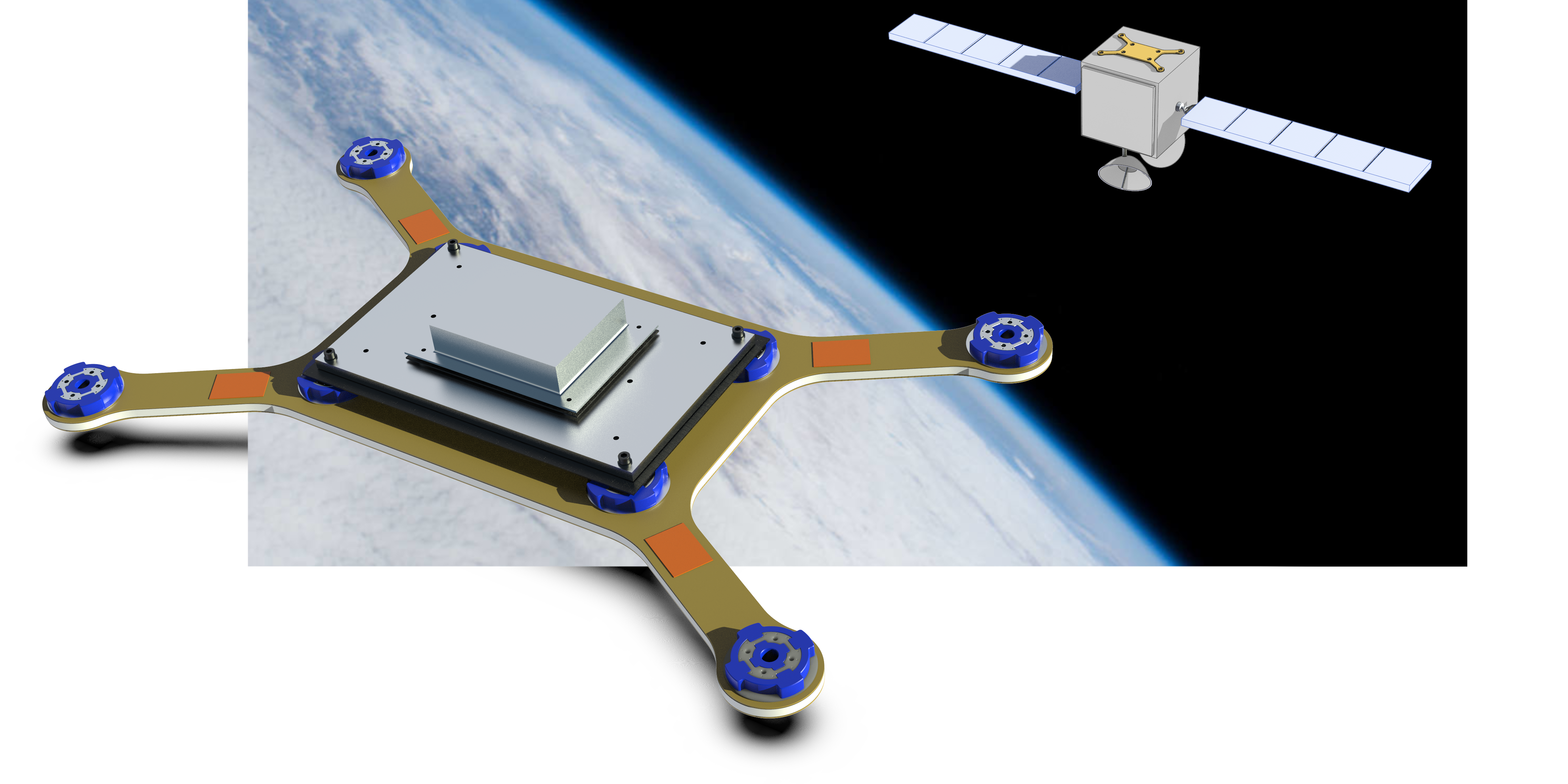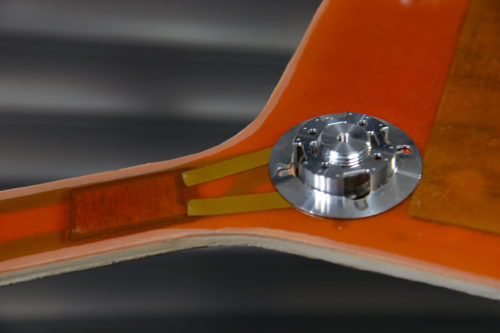In 2018, an institute’s team developed the vision for highly integrated space structures which, thanks to their multi-functionality and modularity, can be universally assembled and deployed – even in space. This idea came out as the winner of an institute’s internal “Competition of Ideas”. An exemplary prototype of the concept has now been implemented in the form of a multi-functional sandwich panel for a satellite. The satellite sandwich panel features a range of systems and functions, all of which are integrated into the structure: Its own power supply and energy storage system, an active vibration control system, a system of integrated electric circuits for data and energy transfer, a thermal control system and multifunctional inserts for load transmission, electrical contact and thermal conduction. In addition to saving on mass and volume, the design of the sandwich panel makes it implementable for all types of spacecraft, including for near-earth orbit satellites and deep space probes.
Multi-functional satellite sandwich panel
Standard satellites and spacecraft normally consist of multiple voluminous and heavy components (for space standards) that are all necessary for the spacecraft to be functional, these include for example batteries, lots of cabling and the load bearing structures themselves. All elements together need to be able to withstand the strong mechanical loads experienced during launch and still guarantee an optimal performance during the spacecraft’s operational life in space. Instead of having separate components, a cross-departmental team of the institute has managed to integrate many of the necessary systems into the structure itself. In the form of a universal, self-adapting satellite sandwich panel, the structure is not only capable of carrying the loads, but also of fulfilling the tasks of some necessary spacecraft systems. In this way, it is possible to reduce mass and volume compared to standard spacecraft. The first prototype of the panel comprises five structurally integrated functions and systems:
Functions

![]() A vibration suppression system
A vibration suppression system ![]() An energy storage system
An energy storage system
 Integrated electric circuits
Integrated electric circuits ![]() A thermal control system
A thermal control system ![]() Multifunctional inserts
Multifunctional inserts
The sandwich panel comprises fibre-reinforced plastic (FRP) cover layers, with the integrated systems in them, and a rigid foam material as the core. The multi-functional inserts extend through the cover layers and the core. The thermal design of the cover layers enables the transfer of thermal loads from the payload towards the main satellite structure via the inserts. The FRP cover layers accommodate the active vibration control system in the form of integrated piezo-actuators; large-surface super capacitors composed of two functional layers for storing and supplying energy; and stainless-steel integrated circuits. The integrated circuits enable the transfer of data and energy between all components, while simultaneously increasing the stiffness of the cover layers. The multi-functional inserts allow for power and signal transfer between the payloads attached to the panel, the elements integrated in the panel itself and the surrounding main satellite structure. Their design also enables a reliable mechanical connection and the transfer of a controlled flow of heat between the panel and the surrounding satellite structure. The vibration control system’s electronic control computers are mounted together with a thermal experiment onto the sandwich panel in the form of a test payload.
Qualification for space
The current objective is the qualification and certification of the multi-functional satellite sandwich panel for future space applications. This covers two important scenarios: the launch from Earth and in-space operation. All components of the satellite sandwich panel must withstand not only the intense mechanical loads during launch, but also the thermal stresses and vacuum conditions in space. To guarantee this, the multi-functional panel will be subject to thermal-vacuum and vibration tests under extreme conditions. Once these have been successfully performed, the panel will be ready for its implementation in any upcoming space missions.









